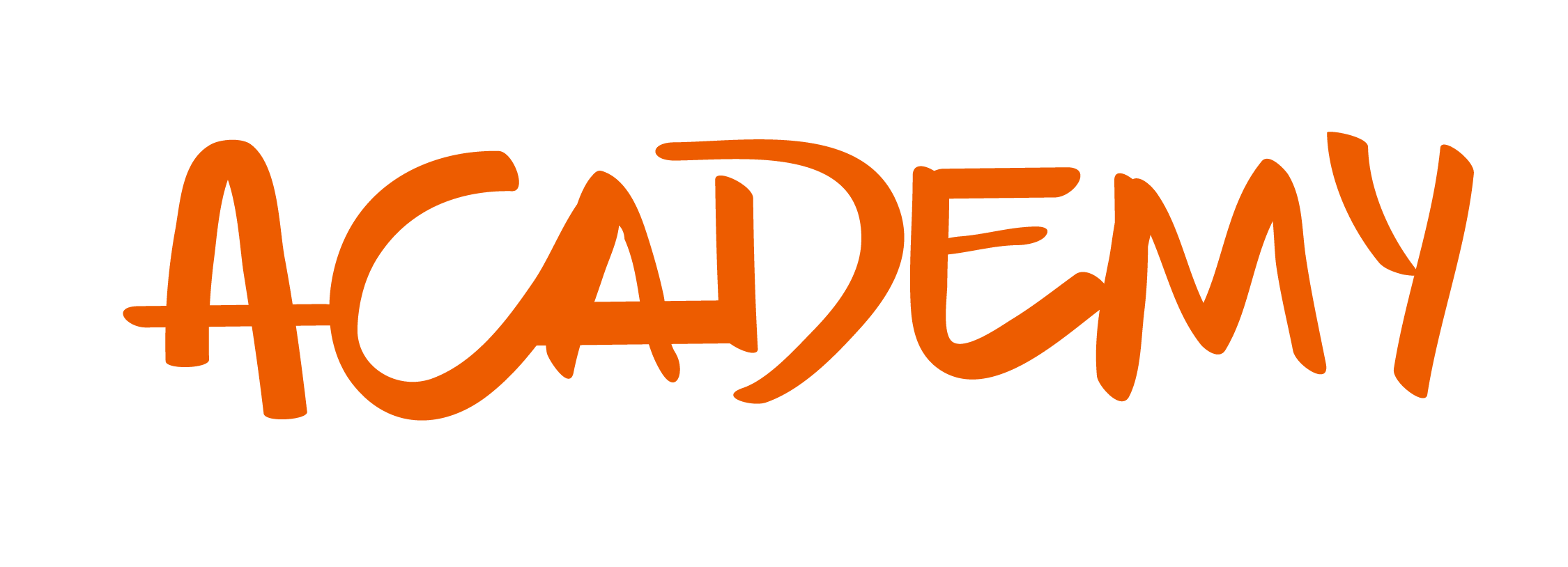In 2020, almost 356 billion USD were spent on digital advertising. And the rapid growth of digital marketing efforts isn’t slowing down. Statista notes that this figure is projected to reach 460 billion by 2024.
It’s no surprise that so many businesses are making online marketing central to their businesses — digital advertising in particular. But while this is a critical means of gaining visibility for your brand and solidifying your outreach strategy, far too many startups and long-established organizations alike are making digital marketing mistakes that are avoidable.
1. Not Understanding Your Target Audience
Many business owners fall into the trap of casting too wide a net when it comes to growing their brand and making it appealing to consumers. They want to reach everyone. But in reality, your target audience is not the wider world. It’s a small, niche segment. In fact, the more you refine and define your potential customers, the more likely you are to be successful.
It’s critical to define your audience as narrowly as possible, such that you’re better able to understand and appeal to their specific needs and wants. This is especially true of small businesses and startups, who must gain a name and reputation before attempting to expand outward.
In order to appeal to small segments, business owners should do extensive market research into their prospective consumers. This is a painstaking process that generally involves creating buyer personas — in other words, developing an understanding of who these people are, how they behave, their interests, their personalities, their demographics, and their activities.
This will guide all of your marketing efforts, digital and otherwise, and advertising is a huge part of that.
Again, keep your audience narrow, focusing on just a few personas. That way, you can maximize engagement with these core consumers, specifically targeting their needs and desires.
Remember, too, that you’re not just attempting to attract new customers. You want to cultivate a sense of loyalty from your existing customers, too, so it’s critical to understand who they are and develop plans to continue to engage them.
2. Focusing on Your Products Instead of Your Audience
Believe it or not, the goal of your business efforts — and entire existence — is not to create amazing products or services. It’s to serve your customers. That means addressing their unique issues and solving their problems. After all, if your product isn’t meeting certain needs, something that was missing for them, then why should they buy it at all?
That means that instead of hawking your product’s incredible features, you should appeal to your consumers’ (and target consumers’) deep curiosities, interests, and problems. What will your product do for them? How will it change their lives for the better? How will it transform them?
Your main marketing goal, first and foremost, is to change lives. That may seem like a lofty ambition for a single product or service but just think about the small ways you can make people’s lives just a little bit easier. That could mean providing a cleaning tool that saves consumers time or a coffee maker that understands individuals’ unique preferences.
Digital advertising is about communicating how your brand and product will change people’s lives. From your efforts, prospective and current consumers should see how their journies will be affected positively by buying into what you are selling.
3. Not Having a Clear Digital Marketing Strategy
All marketing efforts must begin with a defined strategy. Your digital marketing strategy is a branch of your overall marketing strategy, and it must clearly further and service the overarching goals of your organization.
Too often, however, the lines are blurred between print and digital advertising, with little attention paid to the obvious discrepancies between these two marketing channels. Both are important, of course, but leaders and business owners must understand how each will respond to the needs of and reach their target audience in different ways.
For example, a huge part of a digital advertising strategy is recognizing and underscoring the importance of search engine optimization (SEO). This area of digital marketing is constantly changing, so, as part of your strategy, you should employ an expert who is tasked with keeping up with the trends, tools, and evolution of the concept. Your goal is to target audiences such that their searches put your specific brand and product at the top of the list.
This is an intricate, delicate process that not only involves using the right keywords but also involves producing high-quality content, ensuring that your ads and other content are optimized across devices and platforms, including mobile and desktop.
Of course, while SEO is extremely important, it’s only one part of your marketing strategy.
As we’ve touched on, developing personas to ensure that you are properly targeting key audiences and conducting thorough market research are other pieces of the puzzle. You should also investigate the competition, gaining a better understanding of what they are doing to reach consumers, who are often your audience, too.
When you’re creating and solidifying your digital marketing strategy, be clear about your intentions. You should have a specific purpose with defined goals, benchmarks, and key performance indicators (KPIs). It’s important to be realistic and make your goals measurable, such that you are equipped to assess progress. This will guide the rest of your strategy, which will include elements such as the people involved in your campaigns, the media on which you will run them, the predicted and desired results and outcomes, and so on.
It’s also critical to document your strategy, mapping out all components, from roles and responsibilities to timelines to buyer personas. Additionally, you should document the results of following this strategy, which will guide your future efforts. Remember, too, that this is just one part of your marketing plan, which should also be solidified in writing.
4. Trusting Only Paid Advertisements
It’s tempting to rely exclusively on paid advertising, but this will lead to both immediate and longer-term problems. Business leaders often believe that this method will produce the highest conversion rates, and that can sometimes be true — but it’s not always the case. Moreover, this is an expensive strategy. For small businesses and startups, it can often be difficult to find the money to fund these efforts, and it could mean ignoring other, more or equally effective, strategies.
Paid advertisements are usually part of your digital marketing campaign, but they are just that — one piece. Just one-quarter of paid digital advertising reaches businesses’ target audiences, the Association of National Advertisers (ANA) found, and that translates to a considerable amount of wasted money.
Consider all the marketing channels you have at your disposal, online and otherwise. Content creation and content marketing, via your blog and social media, can be hugely beneficial to your brand and specific products. Email marketing, too, is a highly effective means of communicating your mission, highlighting your products and services, and reaching your consumers.
While these components of your overall strategy are not without cost — they involve buying certain software, investing in the right professionals for the particular roles, and so on — they are sometimes more cost-effective than pay-per-click (PPC) advertising.
That’s not to say you should completely eliminate paid advertising from your marketing strategy. You just need to remember that it’s only one part. And when you do incorporate it, do so strategically.
For example, when advertising via Google Ads and social media channels, ensure that you have extensively researched your target audience and are choosing the right demographics and keywords.
Moreover, determine a budget beforehand. Continue to monitor your campaigns, and adjust them as needed, based on the results you see. It’s a good idea to conduct A/B testing to see how different methods appeal to consumers and how your audience responds.
5. Not Using Social Media Effectively
You probably know that in this day and age, social media is one of the most effective marketing tools you have at your disposal. However, many businesses employ a cavalier attitude toward this vehicle, failing to understand the various intricacies involved in leveraging the platforms.
While posting compelling content is part of the equation, there are many more elements that constitute an informed, effective approach to utilizing social media as a marketing tool.
For example, consider the right times to post your content. You can assess the analytics to see when you’re most effectively engaging your audience members. Moreover, track your interactions with your users. Which types of posts receive the most engagement, in terms of likes, reposts, impressions, and so on?
Be consistent, posting regularly, to make sure you stay on your consumers’ radar.
Of course, as with every marketing strategy you employ, you should aim to have a thorough understanding of your target audience so you can engage them effectively and lay out a solid mission and goals with regard to this key component.
Consider, too, how different social media platforms will best serve you and reach your audience. Instagram, for instance, is best for promoting products and services that have visual appeal: retail items, graphic design, and others. Meanwhile, for professional services, consider LinkedIn. Remember, however, that for the most part, social media marketing includes a combination of platforms.
Content-wise, consider a range of approaches. Use both visuals (graphics, pictures, and videos) and text. Have a consistent voice, but work with people outside your organization, such as thought leaders and influencers, to make your content diverse and engaging. Respond to followers who ask questions, mention you, and repost your content. Leverage the perspectives of other organizations and professionals, such as by reposting relevant content on your channels.
There is also the risk of over-relying on social media to convey your brand’s objectives and appeal to your audience. Remember the many other platforms you have available to you, just as you do with paid advertising.
If your business is equipped to, financially and otherwise, it’s often helpful to solicit the guidance and expertise of a dedicated social media professional, whether a freelancer or full-time, in-house employee, to oversee your social media strategy.
6. Not Tracking Your Performance
How do you know if you are effectively reaching your target market? The answer is by tracking your performance. Different efforts and strategies will yield different metrics. Consider each digital platform in isolation, as well as how it contributes to the overall picture of lead generation, conversion rates, and other critical data.
For example, when deploying an A/B marketing campaign, measure the results by examining clicks for each version. You can use Google Analytics to track performance in many cases. For social media efforts, examine engagements and overall impressions to evaluate the efficacy of individual posts and campaigns.
This is how you will test how well your efforts have panned out. Remember: each campaign or individual project is not a one-time initiative — it complements your overall strategy and informs you as to how you are making progress as a business.
Tracking results and analyzing data is how you will fine-tune your marketing efforts and strategy for next time — and there will always be a next time. What is your return on investment (ROI) for each specific initiative? If it was successful, how can you make it even better? If it was unsuccessful, what went wrong?
7. Expecting Results Overnight
People are impatient. They want their efforts to pay off immediately. But it’s important to recognize that it often takes a while for marketing campaigns to deliver ROI.
Even if you’ve successfully optimized a piece of content for SEO, it will take several months for it to rank highly on Google. Email marketing and digital advertising can lead to immediate clicks, but in terms of conversations, more time is often necessary.
In other words, you must be patient and understand that it will take time for digital marketing campaigns to gain traction. That doesn’t mean you’re doing something wrong — it just means you need time to see the results of your labor.
Continue to review your analytics. If you don’t see an upward trend after you’ve given it some time, then you may want to review your strategies and consider what you can change. But don’t be hasty. Some campaigns are a slow burn.
Ultimately, digital advertising is a highly effective tool, one that’s multifaceted and will complement your overall marketing approach. But be wary of making these all-too-common mistakes, being strategic and conscious of your efforts and how they will impact your business.














